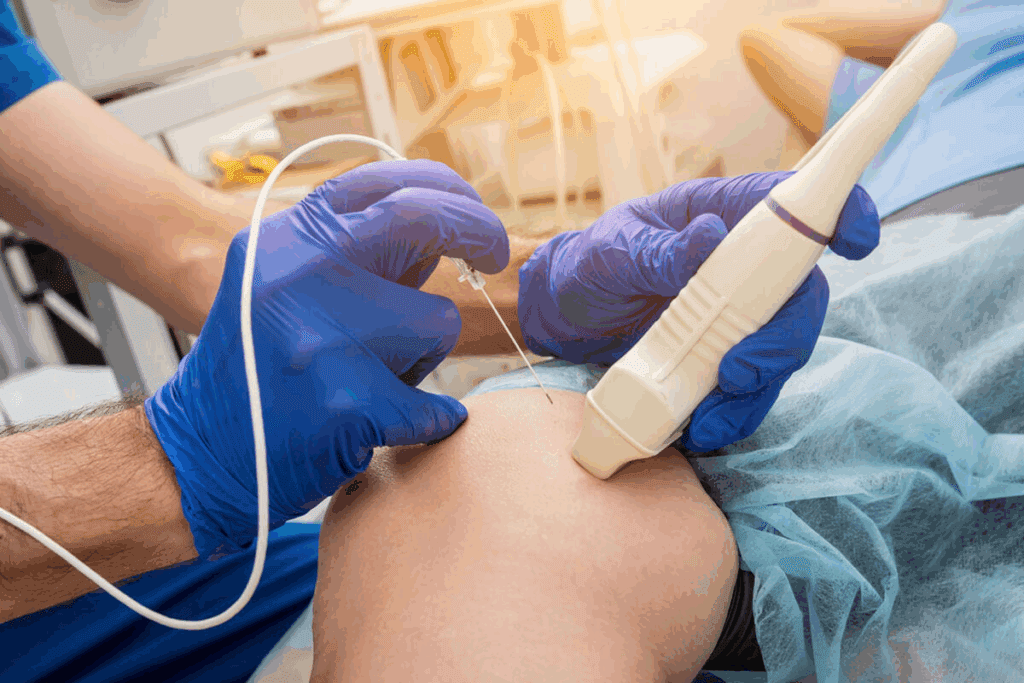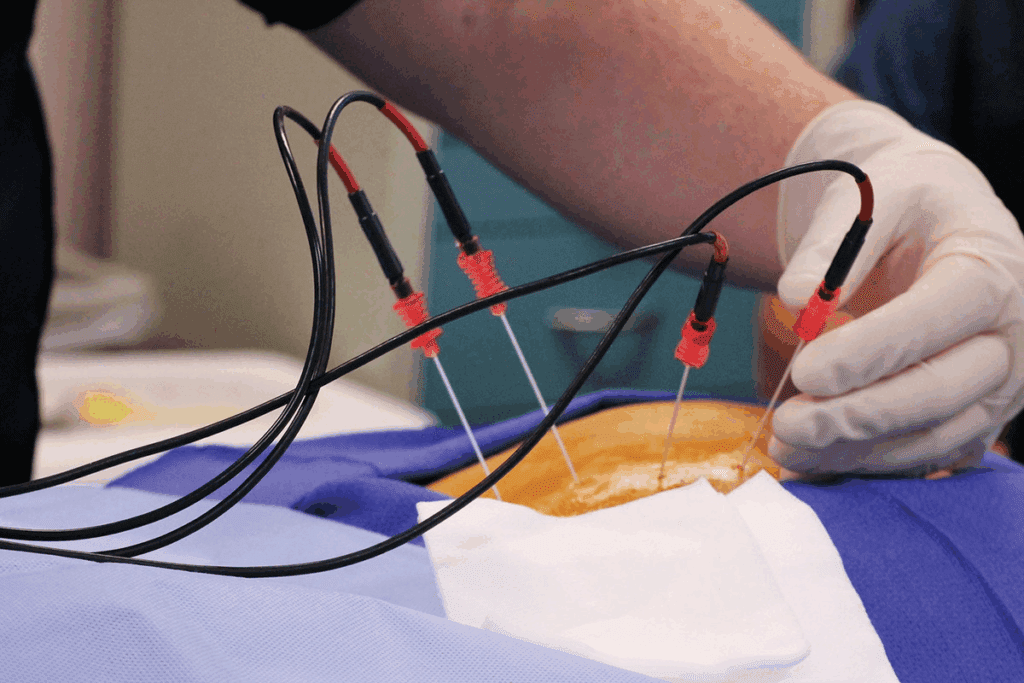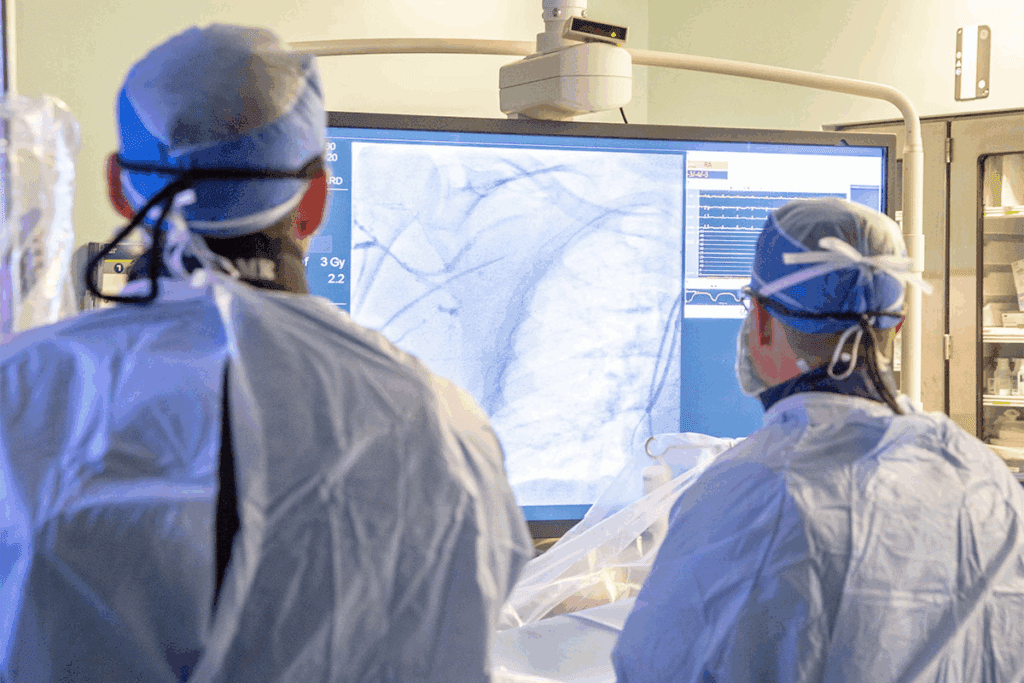
If you have an irregular heartbeat, knowing your treatment options is key. Cardiac ablation is a procedure that’s getting more attention, mainly when meds don’t work. At Liv Hospital, our experts use the latest methods to fix your heart rhythm. They focus on keeping you safe and comfortable.
Understand is cardiac ablation considered surgery, the procedure process, and what patients should know.
So, what is cardiac ablation? It’s a non-invasive way to treat heart rhythm problems. It makes small scars in the heart to stop bad electrical signals. It’s not like old-school ‘open-heart surgery.’ Our article will tell you more about heart ablation and if it’s considered surgery.

Cardiac ablation is a treatment for arrhythmias, which are irregular heartbeats. It targets the heart’s problem areas. This method is key for managing heart rhythm disorders that medicines can’t fix.
Cardiac ablation, or heart ablation, uses catheters to send energy to the heart. This energy makes small scars in the heart. These scars block abnormal electrical signals that cause arrhythmias. Knowing what is cardiac ablation helps patients understand its benefits.
The procedure starts with catheters guided through blood vessels to the heart. These catheters then send out energy to heat or cool the heart tissue. This creates lesions that stop the abnormal electrical pathways, fixing the heart rhythm.
The cardiac ablation definition is about using energy to fix arrhythmias.
The main goal of heart ablation is to treat arrhythmias that medicines can’t fix. It makes targeted scars in the heart to stop irregular heartbeats. This can greatly improve life quality for those with certain arrhythmias, giving a lasting solution over medication.
Knowing the ablation cardiac definition and its use shows its importance for arrhythmia patients. By defining heart ablation and its benefits, we see its value in cardiology.

Cardiac ablation is a treatment for heart conditions like arrhythmias. It’s important to know if it’s surgery or not. This helps patients decide if it’s right for them.
Traditional surgery means big cuts to reach the heart. But, cardiac ablation uses small cuts. It uses catheters through veins in the leg to reach the heart.
Cardiac ablation is less invasive than open-heart surgery. It means less pain, quicker recovery, and fewer risks. This makes it different from traditional surgery.
Cardiac ablation is not open surgery because it doesn’t open the chest. It uses percutaneous techniques to guide catheters through the skin to the heart. This reduces risks and recovery time.
It’s called a procedure because it’s minimally invasive. Advanced imaging guides the catheters. This method treats heart conditions with little disruption to the body.
Cardiac ablation is different from other heart treatments. For example, CABG is major surgery with big cuts and long recovery. Cardiac ablation is less invasive for some heart issues.
Pacemaker implantation is also minimally invasive. But, cardiac ablation targets arrhythmias by destroying abnormal heart pathways. Knowing these differences helps choose the best treatment.
Cardiac ablation procedures have grown into several types, giving hope to those with heart rhythm issues. These new methods have better results and more choices for those who didn’t do well with old treatments.
Radiofrequency ablation is a common method in cardiac ablation. It uses high-frequency electrical energy to make precise lesions in heart tissue. This stops abnormal electrical pathways. It’s great for treating atrial fibrillation and supraventricular tachycardia.
Cryoablation, or cryotherapy, freezes and destroys bad heart tissue with extreme cold. It keeps healthy tissue safe, lowering complication risks. It’s good for treating some arrhythmias, like atrial fibrillation.
Laser ablation uses laser energy to make lesions in heart tissue. It targets abnormal electrical pathways precisely. Though not as common as radiofrequency, it’s an option for those not suited for other methods.
New techniques like ultrasound ablation and hybrid methods are being researched. They aim to make cardiac ablation safer and more effective.
Knowing about the different cardiac ablation techniques helps patients and doctors choose the best treatment. Each method has its own benefits and uses, helping to improve heart rhythm disorder treatments.
Cardiac ablation is a key treatment for many heart conditions. It fixes abnormal heart rhythms in a way that’s less invasive than surgery. This makes it a popular choice for managing arrhythmias.
Atrial fibrillation (AFib) is a common heart rhythm disorder. It causes fast and irregular heartbeats. Cardiac ablation for AFib creates lesions to stop abnormal signals.
We use advanced mapping to find and target these areas. The success rate varies, but many patients see big improvements in their symptoms and quality of life.
Atrial flutter is another arrhythmia treated with cardiac ablation. It’s marked by a fast, regular heart rhythm. Ablation for atrial flutter creates a block in the heart tissue.
Supraventricular tachycardia (SVT) causes rapid heartbeats from above the ventricles. Cardiac ablation for SVT is often very effective. We pinpoint the exact location of the abnormal pathway.
Radiofrequency energy is used to create scars in the heart tissue. This blocks the abnormal signals. The procedure is usually well-tolerated, and most patients can resume their activities quickly.
Ventricular tachycardia (VT) is a serious arrhythmia from the ventricles. Cardiac ablation for VT is used when other treatments fail. We target the specific heart tissue areas causing the arrhythmia.
VT ablation is complex and requires advanced techniques. We work closely with patients to find the best treatment plan.
Knowing about the heart conditions treated with cardiac ablation helps patients make informed decisions. We’re dedicated to supporting and guiding our patients through treatment, aiming for the best outcomes.
Knowing what to expect and how to prepare for cardiac ablation can make you feel less anxious. It can also improve your results. We’ll walk you through the key steps to make sure your procedure goes smoothly.
Before your cardiac ablation, you’ll have several tests. These tests check your heart and overall health. You might have:
These tests help your cardiologist plan the best approach for your procedure.
Your cardiologist might ask you to change your medications before the procedure. This could mean:
It’s important to follow these instructions carefully. This helps reduce risks during and after the procedure.
On the day of your procedure, you’ll get specific instructions. These might include:
Following these instructions is key to your safety and the success of the procedure.
Getting ready for your cardiac ablation means being informed. Ask your cardiologist:
Asking these questions helps you understand what to expect. It also lets you make informed decisions about your care.
| Preparation Step | Description | Importance |
| Pre-Procedure Testing | Includes ECG, echocardiogram, blood tests, and stress test | High |
| Medication Adjustments | Adjusting blood thinners and heart medications | High |
| Day-of-Procedure Instructions | Fasting, avoiding certain products, arranging transportation | High |
| Questions to Ask | Inquiring about risks, pain management, and expected outcomes | High |
Having a cardiac ablation can feel scary, but knowing what to expect can help. We’ll walk you through the process. This will help you understand what happens during this treatment for heart rhythm disorders.
A cardiac ablation happens in an electrophysiology (EP) lab. This lab has the latest imaging and monitoring tools. A team of experts, like cardiologists and nurses, work together to make sure everything goes smoothly.
There are different anesthesia choices for cardiac ablation. These include conscious sedation and general anesthesia. The cardiologist decides based on the procedure’s complexity and the patient’s health. Conscious sedation keeps you awake but relaxed. General anesthesia makes you sleep through it.
The procedure starts with numbing the area where the catheters go. Then, small cuts are made in the groin to reach the blood vessels. Catheters are then guided to the heart to find and fix the arrhythmia.
The catheters use energy to make lesions on the heart tissue. This stops the abnormal electrical pathways that cause the arrhythmia.
The procedure can last from 2 to 4 hours, sometimes longer for complex cases. The team watches your heart closely with advanced tools. After it’s done, you’ll go to a recovery area to wake up.
Recovering from cardiac ablation involves several steps. These include immediate care after the procedure, a stay in the hospital, and recovery at home. Knowing each step is key to a successful healing process.
Right after the procedure, patients are watched closely in a recovery area. Our team checks their heart rate and blood pressure to make sure everything is okay. They also manage any pain or discomfort with medication.
The time spent in the hospital varies. It depends on the patient and the type of ablation done. Most patients go home the same day or after a night. Our team gives personalized advice based on each patient’s situation.
Recovery at home usually takes a few days to a week. During this time, patients should:
There are certain activities to avoid during recovery. These include:
| Activity | Restriction Period |
| Heavy lifting | 1-2 weeks |
| Strenuous exercise | 1-2 weeks |
| Driving | 24-48 hours |
| Returning to work | 2-7 days |
Most people can get back to normal in a week or two. This depends on their health and job type. We offer tailored advice to help them ease back into their lives.
It’s important to know the risks and complications of cardiac ablation before you decide to get it. This treatment is generally safe but comes with some risks.
Short-term issues can include bleeding, infection, and arrhythmias. Rarely, serious problems like cardiac tamponade or stroke might happen.
To lower these risks, follow your doctor’s instructions before and after the procedure. Also, don’t miss any follow-up appointments.
Long-term side effects are rare but can include arrhythmia coming back or new ones. Sometimes, the heart’s electrical system can get damaged.
Seeing a cardiologist regularly is key to catch and manage any long-term issues early.
The success of cardiac ablation depends on the condition. For SVT, success rates are often over 90%. But for atrial fibrillation, success rates are lower and might need more procedures.
| Condition | Success Rate | Repeat Procedure Rate |
| Supraventricular Tachycardia (SVT) | 90-95% | 5-10% |
| Atrial Flutter | 80-90% | 10-20% |
| Atrial Fibrillation | 60-80% | 20-40% |
Many things can affect how well cardiac ablation works. These include the type of arrhythmia, your health, and any heart disease you might have.
Key factors affecting outcomes include:
Knowing these factors and talking to your cardiologist can help you decide if cardiac ablation is right for you.
Cardiac ablation is a key treatment for many heart rhythm problems. It’s a less invasive option compared to traditional surgery. Knowing if cardiac ablation is considered surgery is important for patients to make the right choice.
Cardiac ablation, or heart ablation, uses energy to destroy bad heart pathways. This makes it different from traditional surgery. It’s done with small cuts and catheters, making it less invasive.
Thinking about cardiac ablation means looking at its good and bad sides. It can be very effective for some heart issues. But, it might have risks too. Patients should talk to their cardiologist to know the chances of success and possible dangers.
Understanding cardiac ablation, its benefits, and risks is key to making a choice. Being well-informed helps patients decide if cardiac ablation is right for them. This is the first step to managing their heart health effectively.
Cardiac ablation is a procedure to treat irregular heart rhythms. It creates small scars in the heart to block bad signals.
No, it’s not traditional surgery. It uses catheters to treat the heart, not open-heart surgery.
There are radiofrequency, cryoablation, and laser ablation. Each has its own use and benefits. The choice depends on the patient’s needs.
It treats conditions like atrial fibrillation and ventricular tachycardia. It helps restore a normal rhythm and improves symptoms.
You’ll get tested beforehand and adjust your meds. Follow your doctor’s instructions and ask questions.
You’ll be in a special room and get anesthesia. Catheters will be used to treat the heart. The procedure is closely monitored.
You’ll need rest and recovery. The hospital stay varies. Follow activity restrictions at home and can return to normal life in a few days.
Risks include bleeding or infection. There can also be long-term side effects. Success rates vary based on the condition and patient factors.
Success rates differ by condition. For example, it’s often effective for supraventricular tachycardia but may need repeat procedures for atrial fibrillation.
It’s a unique treatment compared to meds or surgery. The choice depends on the patient’s condition and preferences.
Cardiac ablation treats arrhythmias. “Heart oblation” is not a recognized term related to cardiac ablation or surgery.
It’s not painful due to anesthesia or sedation. Patients are usually comfortable during the procedure.
Suitability depends on the conditions and their severity. Discuss your medical history with your cardiologist to determine the best treatment.
Government Health Resource. (2025). Is Cardiac Ablation Considered Surgery What You Need. Retrieved from https://www.heart.org/en/health-topics/arrhythmia/prevention–treatment-of-arrhythmia/ablation-for-arrhythmias
Subscribe to our e-newsletter to stay informed about the latest innovations in the world of health and exclusive offers!
WhatsApp us